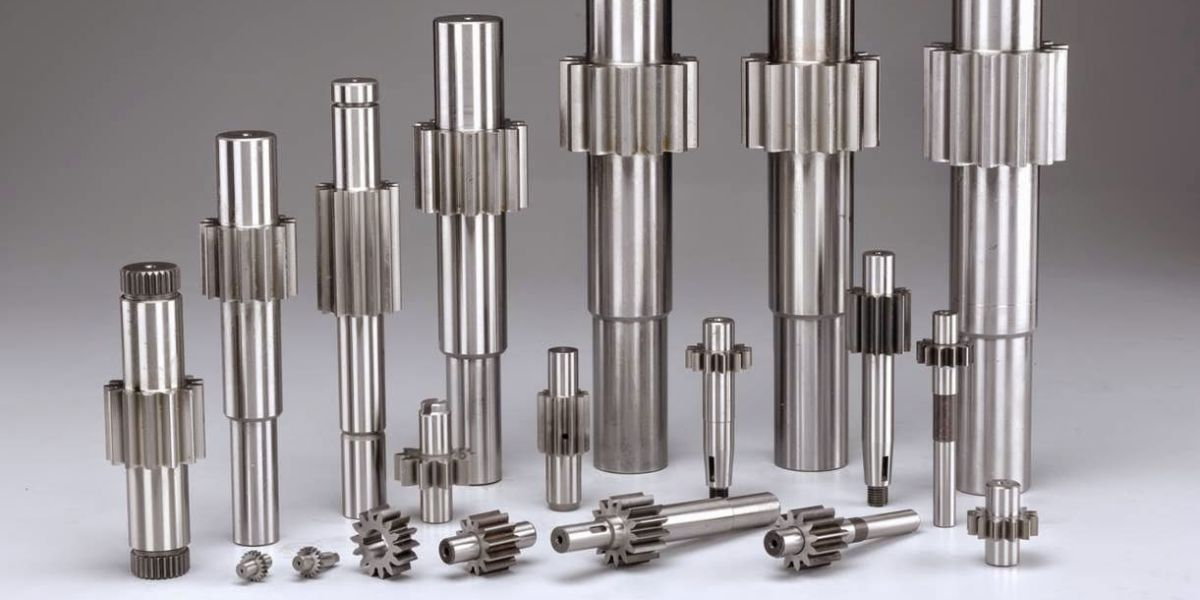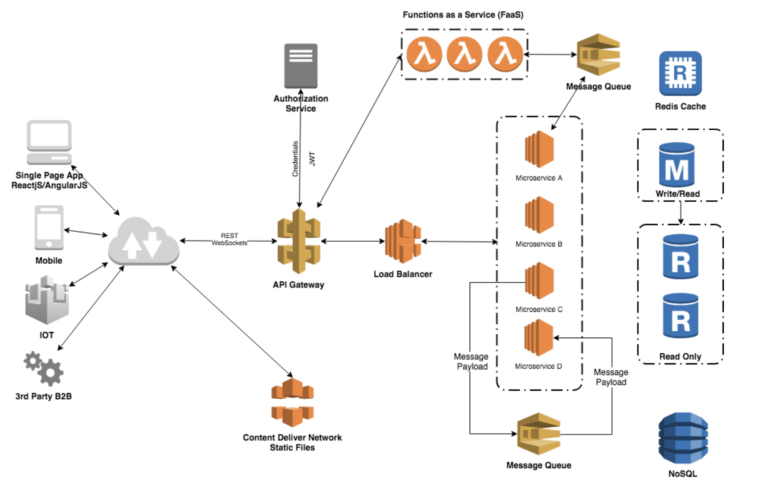Unlocking the Power of Shafting and Transmission Components: Functions, Integration, Manufacturing
Shafting And Transmission Components: Functions, System And Manufacturing
Close-up of a steel shaft, a cylindrical rod transfers rotational motion and machine power.
Shafting and transmission components form the backbone of countless mechanical systems, quietly working to transfer power from engines to wheels, turbines to generators, and motors to various moving parts. As the unsung heroes of machinery, these components play a vital role in the seamless operation of vehicles, industrial equipment, and even household appliances.
Shafting at its core refers to using shafts, rods, and axles to transmit torque and rotation. These elements serve as the bridges that connect motors to gears, pulleys, and wheels, enabling the efficient transfer of energy. Alongside shafting, transmission components encompass a range of gears, clutches, bearings, and belts meticulously designed to regulate a system’s speed, direction, and torque.
In this article, you will learn the complex world of shafting and transmission components, shedding light on their functions, system integration, and manufacturing processes. By understanding these intricacies, engineers and enthusiasts alike can appreciate these components’ silent yet profound impact on our daily lives.
What are Shafting and Transmission Components
Shafting and transmission components are integral parts of mechanical systems, responsible for transferring power and motion from a source to various parts of a machine.
Shafting Components
Shafting components are mechanical elements that transmit rotational motion and torque from a power source to various parts of a machine or system. These components include shafts (cylindrical), axles, and rods.
Transmission Components
Transmission components are vital elements within mechanical systems, controlling the speed, direction, and application of power. They include gears, bearings, clutches, belts, and chains.
Components of Shafting and Transmission
Gears meshed together, demonstrating the function of transmission components in controlling speed and torque.
The components of shafting and transmission play a crucial role in the efficient operation and performance of shafting and transmission systems, ensuring smooth power transfer, reduced friction, and reliable functionality across various industries and applications. Here are the significant components of shafting and transmission:
Spindle
The spindle, a central component in many shafting systems, is the main rotating shaft in lathes, drills, and milling machines. Its primary function is to precisely hold and rotate workpieces or cutting tools, which is crucial for accurate machining operations. Spindles are often manufactured using high-strength steel alloys and undergo CNC machining processes to ensure smooth operation and minimal vibration.
Bearing
Bearings are integral to shafting and transmission systems, supporting and reducing friction between moving parts. They allow shafts to rotate smoothly and transfer loads efficiently. Bearings come in various types, including ball, roller, and plain bearings, each designed for specific load capacities and speeds. Manufacturing bearings involves precision machining and using high-quality materials like hardened steel or ceramic.
Coupling
Couplings connect two shafts, transmitting power while compensating for misalignment or movement between shafts. They are essential for joining shafts of different sizes or types and ensuring efficient torque transfer. Depending on the application’s requirements, couplings can be flexible, rigid, or fluid-based. Manufacturing processes for couplings include precision machining, welding, and forging to achieve strength and durability.
Gearbox
The gearbox is a crucial component that adjusts the speed and torque of a shaft within a system. It consists of gears with varying sizes and configurations, allowing for the desired speed ratio between input and output shafts. Gearboxes integrate into systems to regulate the power transmitted from the engine or motor to the driven components. Manufacturing a gearbox involves precision machining of gears and housing components, assembly, and testing to ensure proper functionality.
Transmission Shaft
Transmission shafts transmit rotational motion and power from the gearbox to other parts of a machine or system. They are often highly stressed and must be manufactured from materials with excellent strength and fatigue resistance. Transmission shafts are typically made from alloy steel or carbon steel, with precision machining processes to ensure accurate dimensions and surface finish.
Propeller Bushing
In marine applications, propeller bushings support and secure the propeller shaft, allowing it to rotate smoothly within the stern tube or bearing housing. They provide a bearing surface for the propeller shaft and are often made from durable materials such as bronze or stainless steel. Propeller bushings are precision-machined to achieve tight tolerances and proper alignment within the system.
Sealing System
Sealing systems prevent leakage of fluids or lubricants from shafting components, ensuring the system operates efficiently and prevents contamination. Seals, gaskets, and O-rings create a barrier against dust, water, and other contaminants. Sealing manufacturing involves using specialized materials like rubber, silicone, or synthetic compounds, with precision molding or custom cnc cutting processes to achieve the required shapes and sizes.
Bearing Seat
The bearing seat provides a secure and stable mounting surface for bearings within a shafting system. It ensures proper alignment and support for the bearings, preventing premature wear and failure. Bearing seats are typically machined from steel or cast iron, with precise dimensions to accommodate the specific bearing type and size.
Intermediate Shaft and Guide Bearing
Intermediate shafts transmit power between a machine’s main shaft and driven components. Guide bearings support and guide the intermediate shaft, reducing vibration and ensuring smooth operation. Manufacturing processes for intermediate shafts involve precision machining and heat treatment to achieve strength and durability.
Power Take-Off Device
Power take-off (PTO) devices transfer power from the main shaft to external equipment or attachments. They are used in vehicles, tractors, and industrial machinery to operate additional tools or accessories. Manufacturing processes for PTO devices involve precision machining, welding, and assembly to ensure reliable power transmission.
Here’s a table summarizing the functions of Shafting and Transmission Components in a variety of applications:
| Component | Function |
| Bearings | Supports and allows rotation of shafts, reducing friction and wear. |
| Clutch | Engages and disengages power transmission between the engine and transmission system. |
| Universal Joints | Allows for angular misalignment between shafts while transmitting torque. |
| Transmission Gears | Allows for variable torque and speed ratios between the engine and wheels. |
| Drive Shaft | It transmits torque from the engine to the wheels of a vehicle, enabling movement. |
| Propeller Shaft | Transfers power from the engine to the propeller, generating thrust for propulsion. |
Materials for Shafting and Transmission Components
The CNC machining process shows a machine tool carving intricate shapes on a metal shaft.
The appropriate material for shafting and transmission components is crucial to ensure the machinery’s optimal performance, longevity, and reliability. Each material offers unique properties that cater to specific application requirements. Companies like Zintilon and Rapid Direct are experts at utilizing these materials for your CNC machining needs. These materials include:
Carbon Structural Steel
Carbon structural steel is a robust and cost-effective material commonly used to make moving parts, such as shafts and gears. It’s known for its durability and ability to handle demanding tasks without wearing out quickly. These steel components are often found in various machines, cars, and heavy equipment where strength and reliability are crucial.
Alloy Steel
Alloy steel, known for its exceptional strength and durability, is a favorite for parts that must endure harsh conditions for a long time. Blending chromium, nickel, and other elements with regular steel makes it tough enough to handle heavy loads and rough use. This type of steel is commonly used in machines, trucks, and airplanes where sturdy parts are essential.
Ductile Iron
Ductile iron, also known as nodular cast iron, is strong and easy to shape, making it ideal for parts that require both durability and versatility. It’s commonly used in gearboxes, machine components, and heavy-duty equipment that needs to withstand demanding work conditions.
High Strength Cast Iron
High-strength cast iron is a rigid material that handles heavy loads and rough environments without wearing down quickly. Heavy machinery gears, large wheels, and components often use this type of iron to ensure they keep running smoothly, even in challenging situations.
Composite Materials
Composite materials, like mixing strong plastics with carbon fiber, offer a unique blend of lightweight and incredible strength. These materials don’t wear out quickly and can handle vibrations well, making them perfect for high-performance applications. They are commonly found in fast cars, aircraft, and machines that require top-notch performance and durability.
Special Materials
Unique materials like stainless steel, titanium, and nickel alloys step in for parts that demand the best. Stainless steel, resistant to rust, is perfect for machines in damp environments such as kitchens and boats. Solid yet lightweight titanium is found in aircraft and precision medical tools. Nickel alloys are ideal for oil, gas, or extreme heat machines.
Conclusion
The world of shafting and transmission components is the unseen backbone of countless mechanical systems, silently facilitating the transfer of power and motion to keep the machinery running smoothly. From the robust shafts and precision bearings to the intricate gears and clutches, each component plays a vital role in the efficient operation of various systems. As we look to the future, embracing advancements in manufacturing techniques and materials is essential to ensure high-quality shafting and transmission components.
Stay in touch to get more updates & news on World Times!







